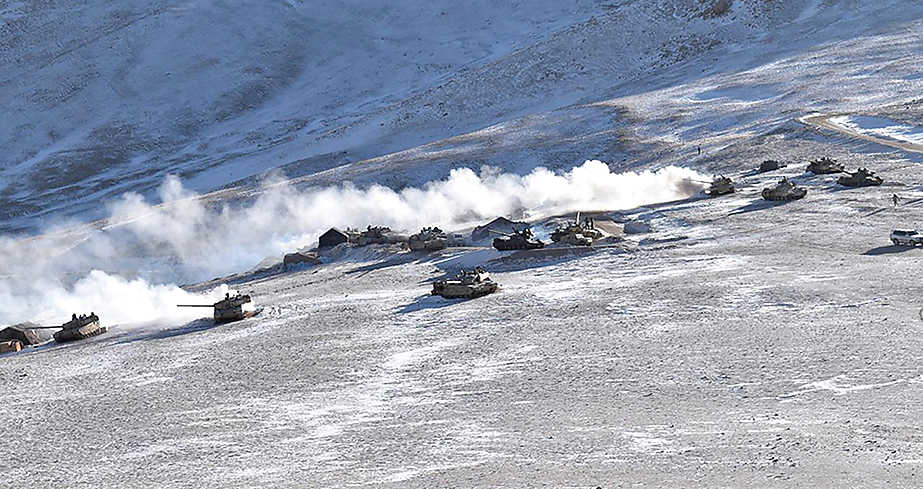Description

Copyright infringement is not intended
Context: With the experience of deploying armour at an altitude of 15,000 ft. to outmanoeuvre the movement of Chinese forces during the stand-off in eastern Ladakh, the Indian Army is prioritising the procurement of the indigenous Indian light tank named ‘Zorawar’, for deployment in the mountains.
Why does the Indian Army need light tanks?
- In the terrain along the Line of Actual Control (LAC) in eastern Ladakh, the Indian Army had to deploy heavier tanks like the T-72 which weighs around 45 tonnes and T-90 with a weight of around 46 tonnes, in the absence of light tanks. Both these tanks are not meant for high altitude areas.
- Rather they are good to be deployed in deserts and plains.
- In 2021, the Indian Army had issued a Request for Information (RFI) for procuring 350 Light Tanks with a weight of less than 25 tonnes – with a margin of 10 percent and same fire power as the regular tanks.
- These tanks are to be deployed in High Altitude Areas (HAA) to counter Chinese deployment of similar armoured columns along the LAC.

What is the Indian Army looking for?
- These Indian Light Tanks (ILT) should be armed with Artificial Intelligence (AI), integration of tactical surveillance drones which will provide a high degree of situational awareness. And also loitering munitions, with an active protection system.
- This project of Light Tanks has been named after Zorawar Singh Kahluria, who was a military general. He had served under Jammu’s Raja Gulab Singh, who according to officials is known as the ‘conqueror of Ladakh’.
- It has been designed in such a way that it will be able to operate in varying terrain from High Altitude Area, island territories as well as marginal terrain.
- The Army also wants the light tank to be amphibious, so it can be deployed across riverine regions and even the Pangong Tso Lake in Eastern Ladakh.
- India’s adversaries both Pakistan and China have already inducted state-of-the-art tanks, which are technologically advanced and have a mix of medium weight as well as Light Tanks with high power to weight ratios.
- As a result of the threat on India’s Northern Border to remain in the foreseeable future, there is an urgent need for the Indian Army to be ready with their own indigenous Light Tanks which can be deployed faster in case of operational requirement.
- Since 1982 the need for the Light Tank is being projected several times by the Indian army. These Light Tanks have been employed as Force Multipliers in different battle engagements including: in Battle of Kohima in World War II when Stuart Tanks of 254 Indian Tank Brigade were deployed; in the Indo-Pak war 1947-48 — in Naushera, Jhangar, Rajauri & most successfully at Zojila; in 1962 AMX-13 tanks at Chushul & Bomdila; in 1965 AMX-13 tanks at Chammb &in 1971 the amphibious PT-76 light tanks with the PT-76 tanks leading the race to Dacca.
https://epaper.thehindu.com/Home/ArticleView














